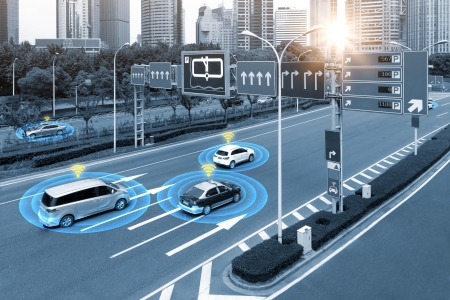Infrastructural obstacles
Relatively speaking, the Netherlands have a great many motorways. Higher-level self-driving vehicles (see the question Which levels of driving automation can be distinguished?) are likely to be introduced on motorways first, in which case the Dutch dense motorway network may be an advantage. However, problems may arise because Dutch motorways are used intensively and are provided with a great many entry and exit ramps. This makes the Dutch motorway system relatively complex [10]. Complexity could be reduced if self-driving vehicles were to drive on separate lanes, isolated from other road users. Thus, conflicts between self-driving vehicles and other road users could be minimised. A prerequisite for separate lanes for self-driving vehicles is a sufficient number of vehicles and sufficient space. In the Netherlands, the latter can by no means be taken for granted. In addition, the current infrastructure needs more general adjustments to prevent crashes with self-driving vehicles, since is was designed to be used by people and not by machines [30]. The infrastructure/roadside will, for instance, have to be modified for communication with self-driving vehicles.
Technical obstacles
A possible technical obstacle is, that the sensors of a self-driving vehicle can only observe a relatively small part of the environment. Moreover, they may malfunction because of obstruction or weather conditions. The observation capacities of a self-driving vehicle can be extended by exchanging information between the vehicle and everything that may affect the vehicle or everything that may be affected by the vehicle, such as infrastructure and other road users [31]. This is also called V2X (vehicle-to-everything) communication. In order to realise this and to guarantee reliability, the necessary technology, such as communication networks, needs to be developed further and collaboration between all parties involved is called for [31].
Driving is usually a relatively easy task for people, but for a system it is hard to specify. For every generic rule, such as keeping a safe distance to a preceding vehicle, there are context-specific exceptions. And new, unforeseen situations may occur. To ensure that the system will be able to cope, it is important to determine what kind of data and how many data need to be collected to train the system. New methods and approaches are needed to have all this finetuned [32].
